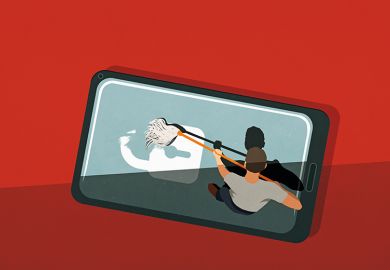Modern students either can’t or won’t read. This is a complaint we hear again and again from humanities professors. But, as so often in academia, the reality is much more complicated. And it is incumbent on academics of all people to avoid simplistic and superficial analyses.
People who compare today’s young adult students with those from some mythical golden age of Great Books are apparently unaware that complaints about students’ reading habits are as old as education itself. They were certainly made frequently when I was an undergraduate in the 1960s (a frequent candidate decade for the “golden age” moniker) and were repeated throughout my career.
The fact is that college professors have always thought that students should read more. Nor is it straightforwardly true that students now read less than they ever did. The evidence is contradictory, but while it is clear that less required reading is being set, this is at least in part a result of professors’ own preferences. Moreover, faculty need to accept responsibility for their own role in curating their students’ reading and understanding their circumstances and needs.
As a historian of literacy, I have a special concern about self-serving faculty narratives about students’ reading and writing abilities and inclinations. We are currently witnessing a new round of criticism of so-called limits on certain students’ ability to read certain printed texts in certain classes. As usual, though, there is no attention to frequency, change over time or, in particular, the role of different forms of writing, let alone different media.
Take a Slate article published in February by Adam Kotsko, a professor at the Shimer Great Books School, part of Chicago’s North Central College. In the article, “The Loss of Things I Took for Granted”, Kotsko recounts that while he used to assign around 30 pages of reading per class, he finds that “now students are intimidated by anything over 10 pages” and “even highly motivated honors students struggle to grasp the basic argument of a 20-page article”.
In this essay, he does not blame students for their classroom circumstances. As well as smartphones and the pandemic, he points to the increasing pressure on schools to focus all their teaching on test (and therefore funding) outcomes and “fads coming out of schools of education” such as the decline in phonics education.
The last of these, though, is a mistake. The reality is that children of all ages learn and practise reading by interrelating elements of the visual and oral, phonics and phonetics. It is never one mode of access versus the others, despite our periodic “reading wars” of phonics versus phonetics. Numerous other factors are at play in preparing students for college, not least the rise of the unregulated practice of counting many high school courses to meet college requirements even when they are not sufficient preparation and, in effect, set up students to fail. Students, instruction, reading practices and school and college regulations and priorities all evolve in complicated ways, as do communications media. Change is never linear.
Nor does Kotsko ask about the role of his own teaching and assignments in influencing his students’ reading and writing behaviour. Academics should never underestimate the power of the oral and the collective, for instance. And they should be curious about how their students actually read texts. Diverse students have diverse interests, and each text – classic and contemporary, high- and lowbrow – makes its own intellectual demands. Even Great Books instructors must recognise this and incorporate into their syllabi a variety of texts that make different demands on their readers. After all, there is no single, simple definition of “great” books. Variety – “diversity”, some might call it – should be central to every course.
Among the many current undergraduates with whom I speak directly, even business and STEM students “miss reading”, with which they grew up. They happily make selections from my own library (which I am in the process of giving away) across fields, times and places. They desire first- or second-year required courses in, for example, the history, philosophy and literature of science and technology. Finance, management and accounting students want real economics and economic history. All students want more writing and other forms of communication instruction and practice.
They read almost anywhere they can. They form reading groups. They tackle difficult texts, perhaps more often on their own and in groups than in classes. My young friends are excitedly reading and debating Marx and the 1950 to 1980s English Marxists, as well as Heidegger, Foucault, Althusser, Bourdieu, the Annales School, Russian literature, feminist fiction, Supreme Court cases and so much more.
And this enthusiasm is not just anecdotal. Multiple surveys document that more students are preferring to read books in print and are buying more physical books. Today’s college and secondary school students are skilled in reading across different forms of written, printed, numerical, oral and visual forms of expression in their fields of expression and study.
Students want to be taught – respectfully, responsibly and appropriately. They should not be criticised for the limitations of their elementary and secondary school preparation. And they should not be treated as children.
Harvey J. Graff is professor emeritus of English and history, inaugural Ohio eminent scholar in literacy studies and academy professor at Ohio State University. His most recent book is Searching for Literacy: The Social and Intellectual Origins of Literacy Studies (2022).
Register to continue
Why register?
- Registration is free and only takes a moment
- Once registered, you can read 3 articles a month
- Sign up for our newsletter
Subscribe
Or subscribe for unlimited access to:
- Unlimited access to news, views, insights & reviews
- Digital editions
- Digital access to THE’s university and college rankings analysis
Already registered or a current subscriber?








